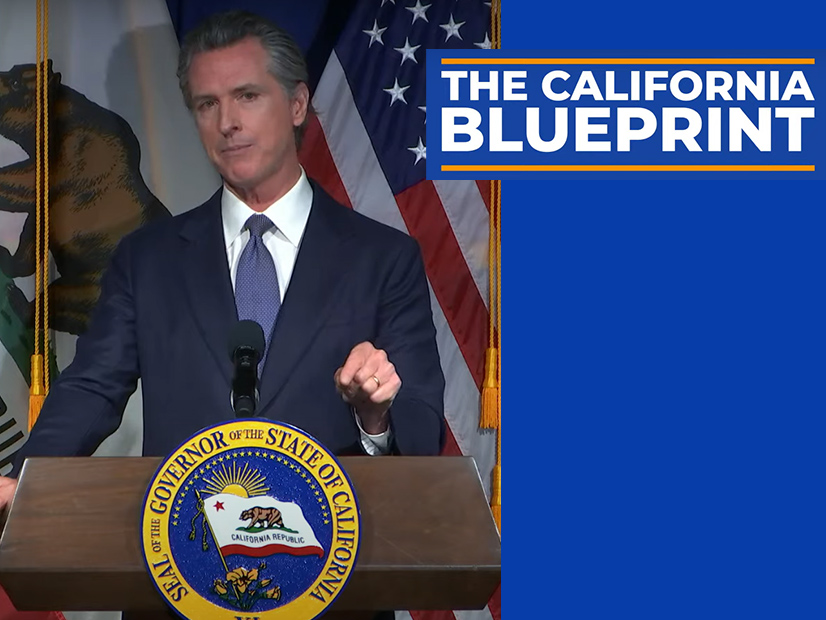
California Gov. Gavin Newsom on Monday released a fiscal year 2022/23 budget plan that proposes spending $22.5 billion over the next five years to fight climate change, including allocating billions of dollars for transportation and building decarbonization efforts.
Newsom’s plan would invest an additional $6.1 billion to accelerate the adoption of zero-emissions vehicles on top of the record $3.9 billion in last year’s budget, bringing the total to $10 billion over six years. The $6.1 billion in this year’s plan includes more than $3.5 billion for medium- and heavy-duty trucks, and school and transit buses.
“For California, you can’t get serious about climate change unless you’re serious about tailpipe emissions,” Newsom said in a press conference Monday. With such a large expenditure on EVs, “you’d think we were announcing for the United States government [but] this is a $10 billion state … commitment on zero-emission vehicles.”
Vehicle emissions account for roughly 40% of greenhouse gas emissions statewide; electrifying the transportation sector has been a top priority for Newsom and former Gov. Jerry Brown.
Brown ordered the state to put 5 million EVs on the road by 2030, and Newsom issued an executive order in September 2020 requiring all new passenger vehicles sold in-state to be emissions-free by 2035. (See Can California Meet Its EV Mandates?)
Last year, state lawmakers devoted a record $2.7 billion toward zero-emission vehicle programs in FY 2021/22 and $1.2 billion over the next two fiscal years. The funding for zero-emission trucks, buses and passenger vehicles was far more than the $1.5 billion that Gov. Gavin Newsom had proposed in January 2021. (See Calif. Earmarks $3.9B for ZEVs Through 2024.)
In his new plan, Newsom proposes adding $2 billion to fund projects needed for the state’s transition to 100% clean energy by 2045, including long-duration storage, green hydrogen and offshore wind infrastructure.
The past two summers saw CAISO’s grid stretched thin as the state relied more on solar power and imports to meet demand, both of which can dry up during Western heat waves that extend into evening hours. CAISO has connected about 2,250 MW of short-duration storage since the energy emergencies of summer 2020, but long-duration storage for wind and solar power is required to discharge for more than four hours. (See Long-duration Storage Needed for Decarbonization.)
In the building sector, Newsom proposed spending nearly $1 billion, including $622 million to retrofit low-income housing with electric appliances, efficient lighting and insulation. Another $300 million would fund consumer rebates for replacing gas furnaces, water heaters and kitchen ranges.
The California Energy Commission made the electrification of commercial and residential structures a key part of its 2022 building code update, requiring new homes to be wired for all-electric appliances and to use an electric heat pump either for space or water heating. (See Calif. Energy Commission Adopts 2022 Building Code.)
The current market share for heat pumps in California is less than 6% in new home construction; the requirement is expected to greatly increase demand and make heat pumps more affordable and widely available.
The requirements will reduce greenhouse gas emissions by 10 million electric tons, the equivalent of 2.2 million internal combustion passenger vehicles, in the next 30 years, the Energy Commission forecasted.
The governor’s total $286 billion budget plan is based on a second year of surplus revenue in California. This year’s surplus is estimated at nearly $46 billion.
Newsom’s proposal now must make its way through the legislature, with a revised plan scheduled to be issued in May.


